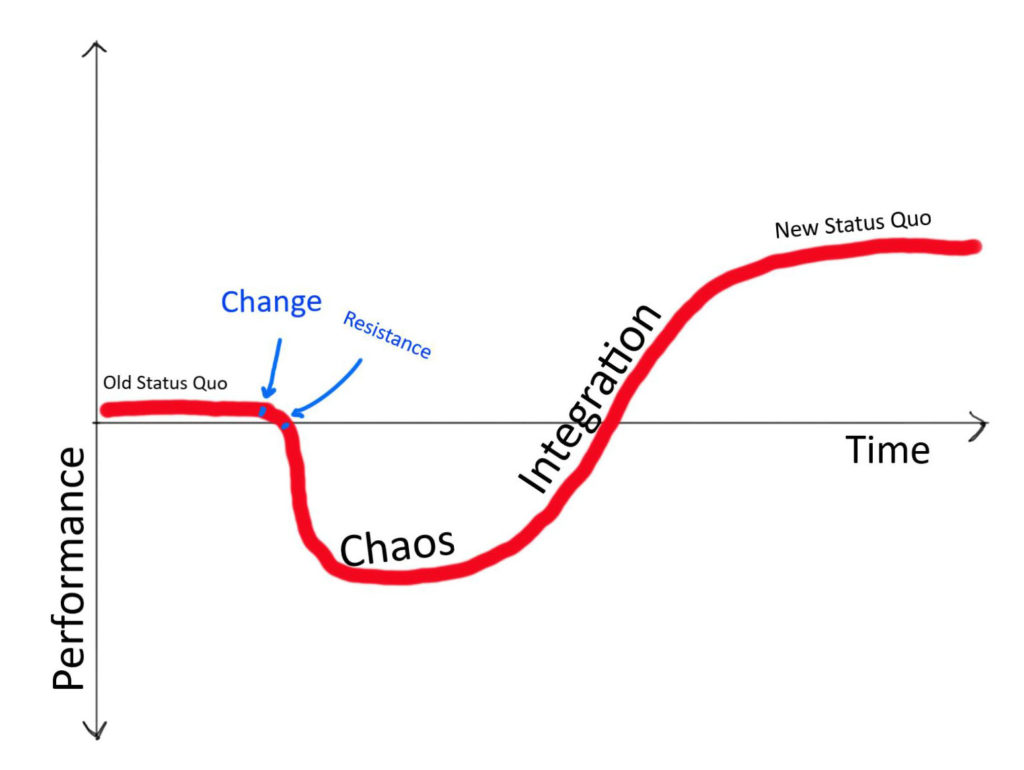Last year I got my first pair of progressive bifocal glasses. I have been wearing glasses since middle school, so I didn’t think they would be much different, other than improving my ability to read up close. I was wrong.
Yes, they help greatly with reading items up close. I was able to clearly see the dash of my car for the first time in years. (Scary thought, I know). I was able to read a menu without having to take my glasses off, which was great.
But they also had some side effects that made me timid and made me questions whether I wanted to keep them.
My wife and I like to do day hikes when we travel, and we had a trip planned a few weeks after I got my first pair. Since they double as sunglasses, I decided to wear them on the hike. As we started to cross a stream between two waterfalls, I was starting to get worried.
As I scanned the rock looking for sure footing, the ground I wanted to step on seemed to move. As I moved my head, the rocks below me seemed to move from side to side!
This started to concern me. If I’m not sure where the rocks are, how can I make sure I step on them correctly? What If I step where I think they are and they are not really there? What if I step on the side of a rock instead of solidly in the middle? I didn’t want to go for a swim!!
Going through change is like getting a new pair of glasses. At times, we notice our vision has changed which leads us to get a new pair. Other times, we need someone else’s perspective to see that we need to change. I didn’t understand how bad I needed a pair of bifocals until my optometrist showed me how much better I could see with them.
When we step off the edge and jump into the change, things will happen that we never thought of. Issues will come to light. These issues can shake our confidence and throw us into a state of chaos.
The progression of change can be seen using a Satir curve. (See image below)

At the beginning of the curve is the old status quo. The old status quo is comfortable. We know what to expect. It’s not perfect, but we know the rules.
Next comes the change that drives us down into resistance and/or chaos. If the change is forced on us, we tend to show resistance until we realize that the change cannot be avoided. The change disturbs our life and throws parts of it out of balance. This lack of balance results in some level of chaos.
With my new bifocals, I experienced the ground and stairs moving when I walked. I responded to the change by being more careful walking up curbs and holding the handrail tight when I walked downstairs.
People don’t like living in chaos. It’s natural to try to find a way to experiment with ways to eliminate the chaos. As the experiment goes on, ways to address and make sense of the chaos begin to be integrated into the process.
Over time these new ways become the new status quo.
Several weeks after getting my bifocals, I didn’t even notice the ground moving. My brain adapted to the new information. It became the new status -quo. But I needed to go through the chaos to get to the new status quo.
I’ve seen good-natured leaders attempt team change with the intent of avoiding the chaos phase. They are always surprised when chaos happens. Although the intention to minimize chaos is good, it cannot be completely eliminated.
The only way to completely eliminate chaos is to never change.
Without chaos, there is no need to experiment and integrate new ways of working and thinking. If I didn’t keep my bifocals on, my brain would not have learned how to handle the new information.
Now that I’m on the other side of the change, I’m at a new status quo. I can hike without worrying about the ground “moving” below me, and I can see up close. By working through the chaos, I’m in a better place.
What about you? What are the new glasses that you need to work through?
Photo by Bud Helisson on Unsplash
